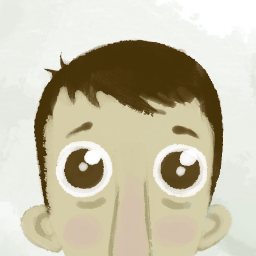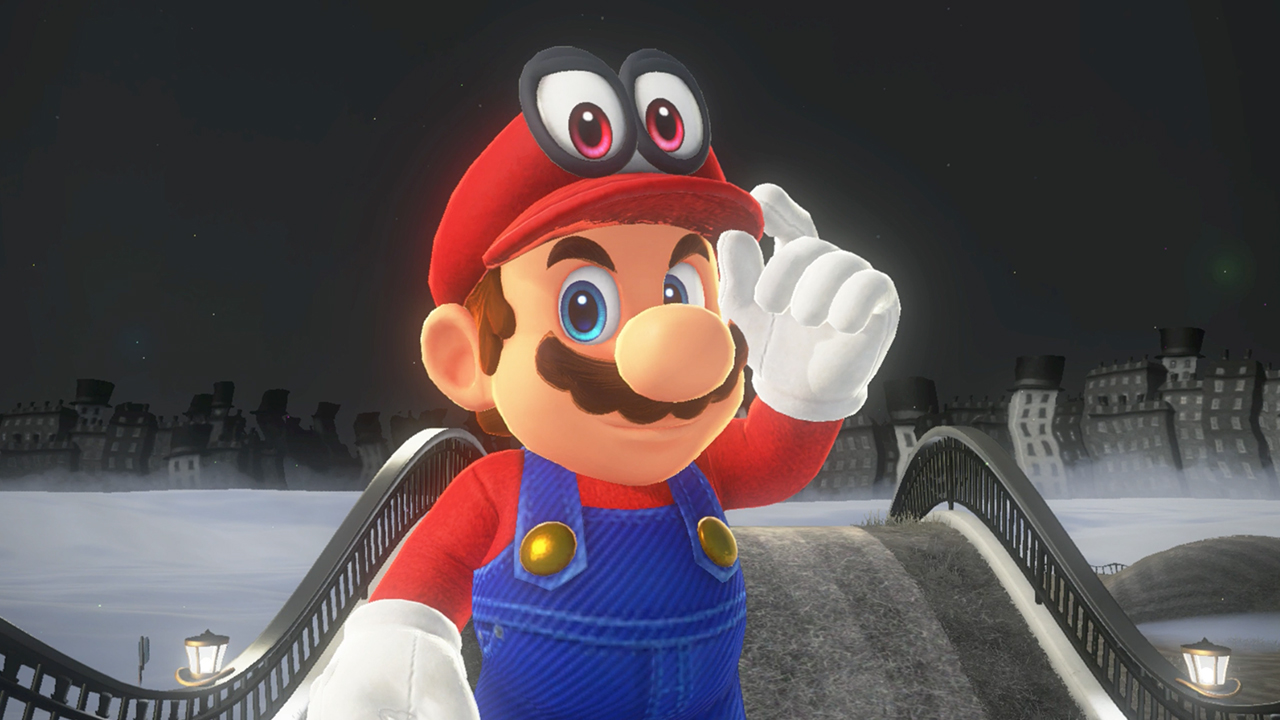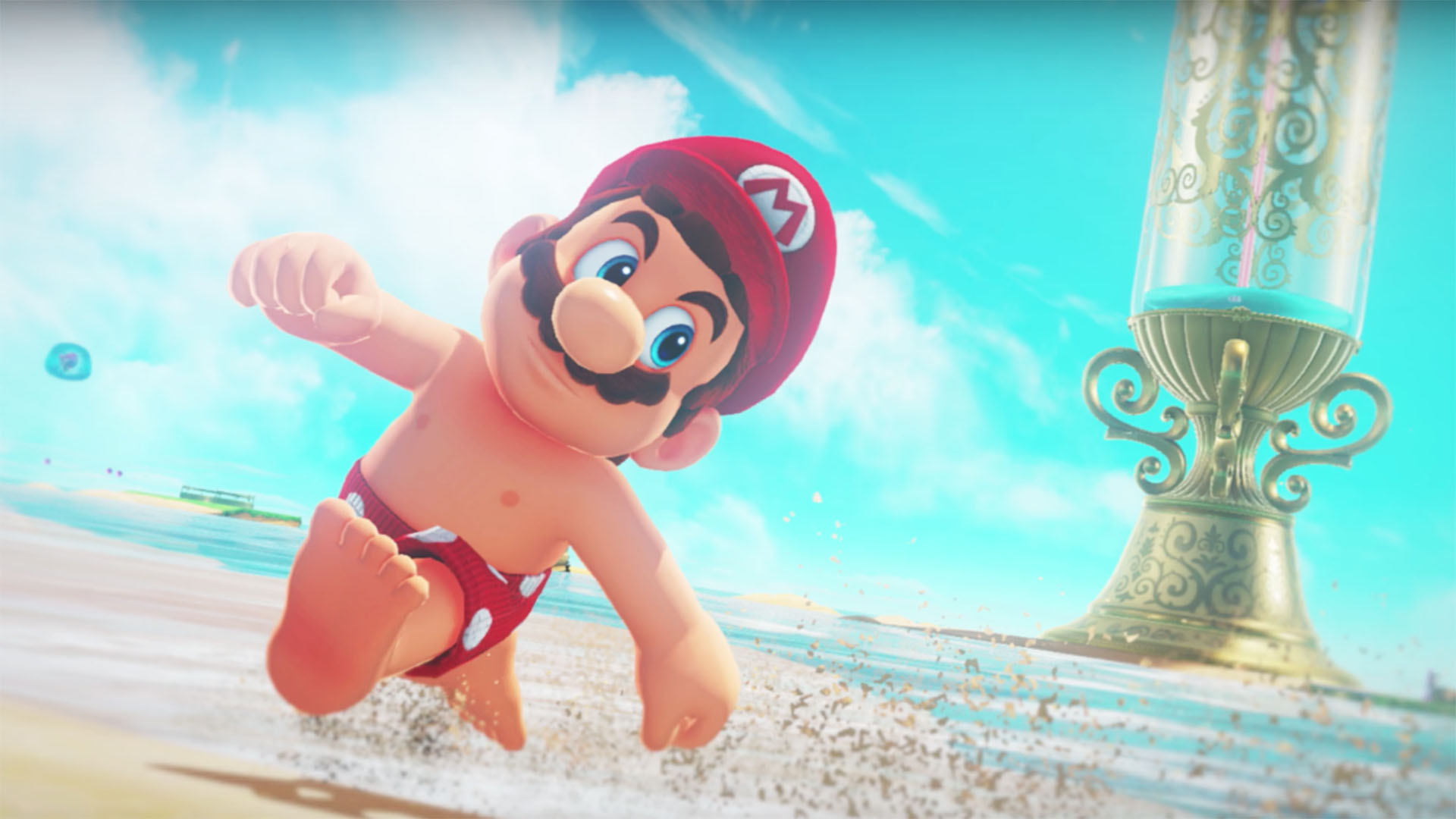How Luigi's Mansion 2: Dark Moon created a true underdog hero, as well as one of Nintendo's most intricately playful worlds
Part doll's house, part spook-'em-up playground, the 3D sequel's real joys come from the tactility of its exploration.
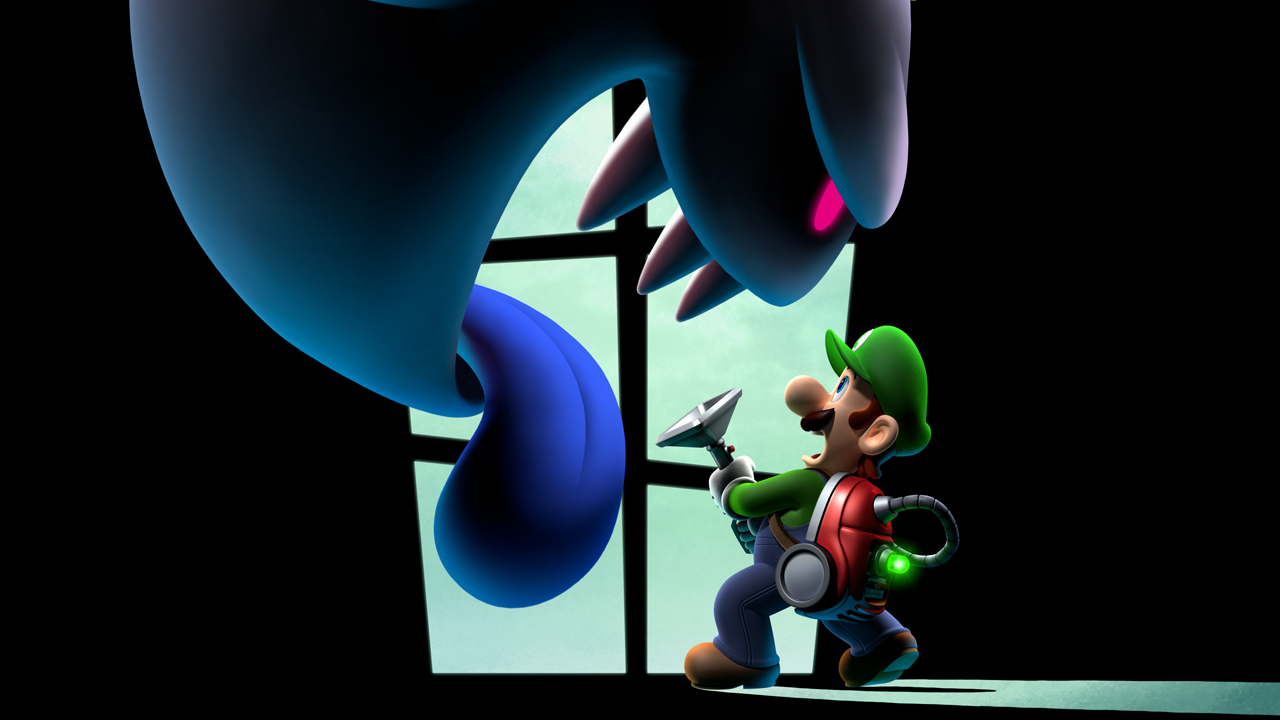
By the time Luigi’s Mansion 2: Dark Moon came out in 2013, the strangeness of focusing an entire game on Mario’s overlooked sibling sidekick was long forgotten. Yet back in 2001, just before the Gamecube’s launch, Luigi had barely developed from his origin as a pixel-swapped Mario for a second player. Sure, you were probably familiar with his lazy, leg-flailing high jumps in Super Mario Bros 2. Maybe you had the misfortune to experience him in the question-and-answer misery of Mario Is Missing. But he hadn’t even landed a cameo in Super Mario 64, and in Yoshi’s Island, he was just a green baby.
Then came Luigi’s Mansion, and how fitting that it was in part a deconstruction of how his was a life lived in the shadow of his superstar brother. Thrust reluctantly into the role of hero, Luigi’s ghostbusting powers are entirely granted by the Poltergust 3000 strapped to his back. He can’t even jump: when you press the A button, he quaveringly calls for Mario. It forges Luigi a full identity as that distant second fiddle, a good joke told many times in the years to follow, from the Mario & Luigi RPG series to Super Mario Galaxy, and enough to power an unironic year of celebration in 2013 so heady that it extended into the following year.
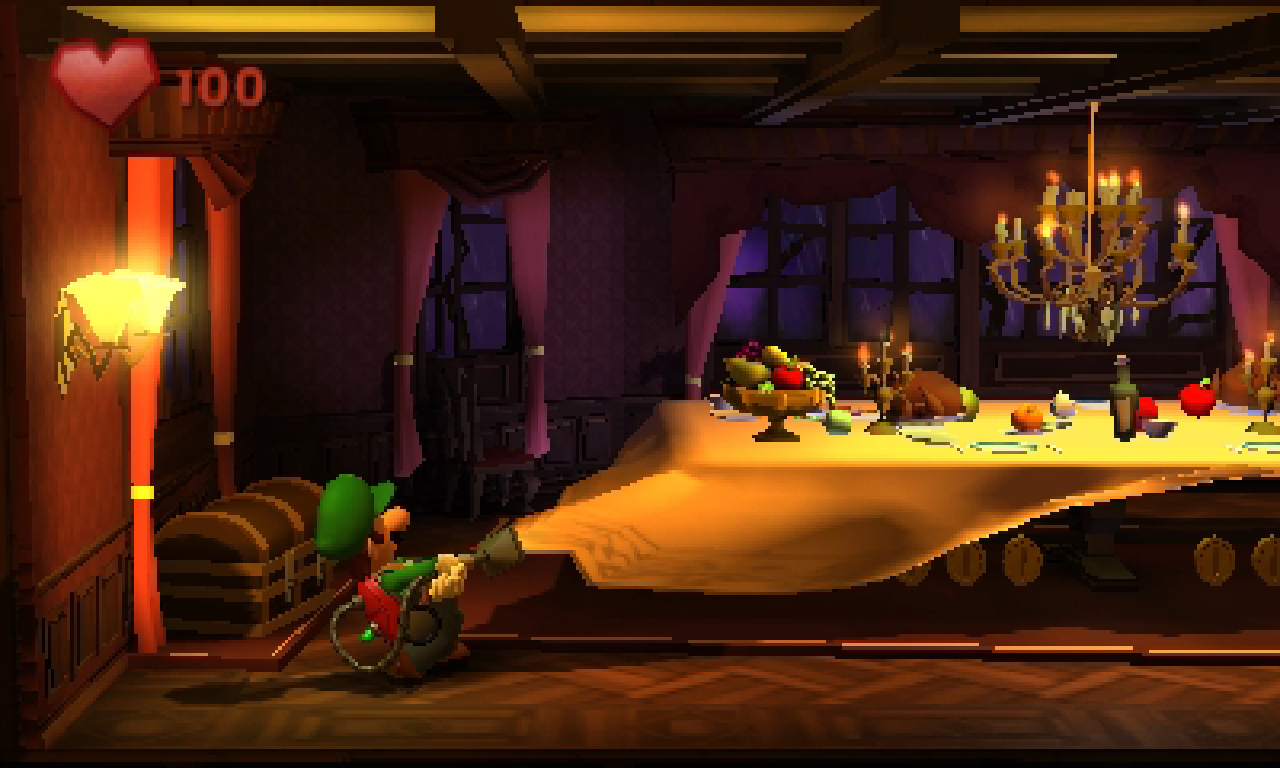
As a result, Luigi’s Mansion 2: Dark Moon contains little of the gentle absurdity that the original had in spades. Luigi has by now become a bona fide lead, and is quite deserving of a vehicle of his own, even if he plays much the same role, all wide eyes and chattering teeth. This time, though, he’s even more unwilling to be the hero. If Luigi changed in the years between the releases of the original Luigi’s Mansion and its sequel, it was to become more lackadaisical. In Dark Moon’s introductory cutscene, he’s happily sleeping in his chair at home when he’s quite literally pulled into a story that doesn’t even concern him by a returning Professor E Gadd, who’s experiencing ghost problems again. Knowing how well Luigi exorcised them the first time around, he’s making him do it all over again.
It’s the setup for a broader comedy than what came before – one which is almost entirely based on taking great pleasure in torturing Luigi. Throughout, he’s faced with scares: ghosts jumping out from the scenery, revolving doors that send him flying, stairs that send him tumbling. His pratfalls are exquisitely timed, his unhappy attitude only giving them greater spark. Everything that Mario has faced in ghost houses inflicts Luigi here, but more so, since Luigi is so unfortunately grounded, unable to gamely jump away.
Before one of the game’s bosses, Luigi hopelessly stares at the floor, dreading what’s to come, and Professor Gadd throws him through his Pixelshifter, a teleportation device that packages Luigi into bits and sends him digitally to different locations across the five mansions featured in the game. Every time he uses it, Luigi gurns with trepidation, and so he should: naturally, it’s a little glitchy and he usually rematerialises a few feet above the ground or with his foot stuck in a bucket. Poor Luigi, forced to be the hero and punished for it. And the money he collects isn’t even destined for his own pockets, instead used to top up Gadd’s research budget. For Luigi there’s no reward, only struggle and threat.
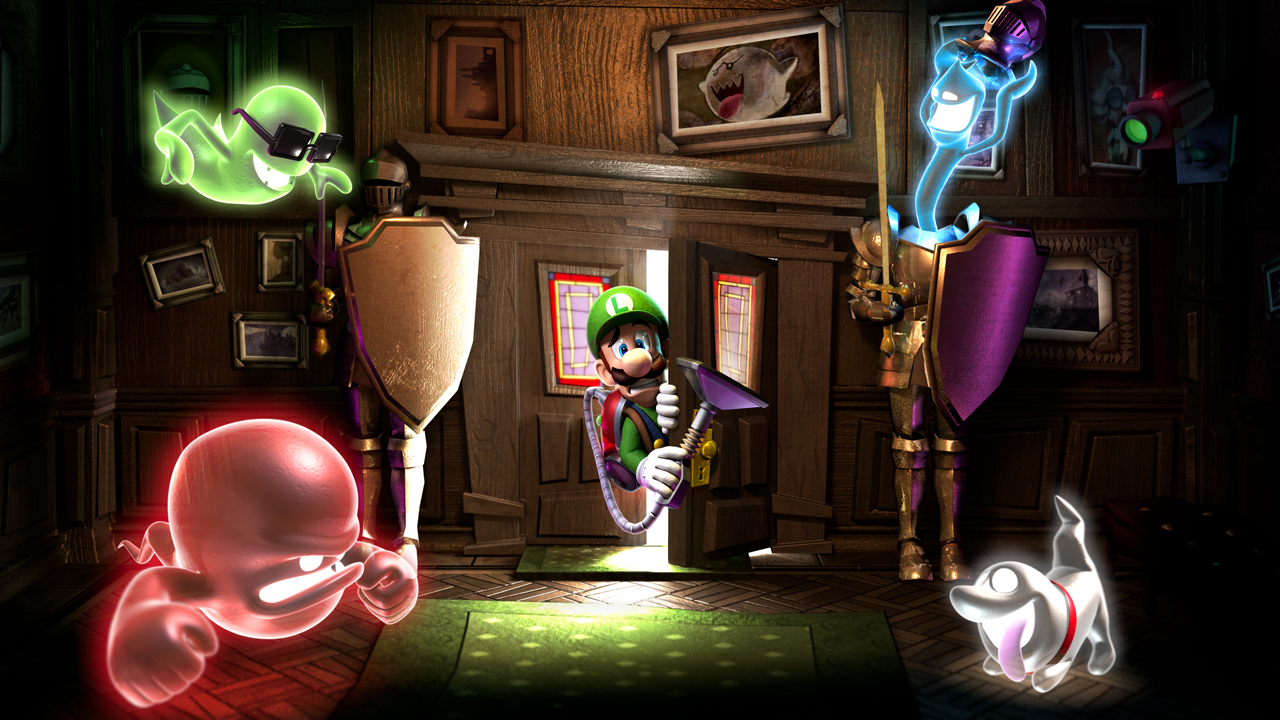
This adventure is a lot more uniform than his first, which took the form of a kind of mini Metroid, allowing him to stay in the mansion for long portions, progressively unlocking doors across its floors as he found keys and abilities. In Dark Moon, the campaign is broken into discrete missions which set up its five mansions in specific ways, blocking doors and preparing encounters. It’s a design choice that perhaps fits better in the pocket, breaking the story into 20- or 30-minute chunks of play and giving you a rating at the end that you can return to and attempt to beat.
A wealth of ideas, and not one over-used
Beyond practicality, though, that choice also emphasises Dark Moon’s nature as a series of mini tableaus for you to explore. The original, of course, was also constructed from tableaus set in the different rooms of a Resident Evil-like haunted house, but they were focused on the portrait ghosts it was the game’s object to capture. In contrast, Dark Moon’s rooms are more individual, the products of a couple of developments that had risen in games in the 12 years between Luigi’s Mansion and its sequel.
Weekly digests, tales from the communities you love, and more
One is all-pervasive, building on the original’s rudimentary physics and making each space into a playroom. As a game about vacuuming, the ability to suck and blow always lay at the centre of Luigi’s interaction with the world, but Dark Moon features a lot more to push and pull around. Peeling wallpaper and posters are hidden in most rooms, as well as ropes to pull on and other vacuumable elements that Luigi hoovers up with a pop.
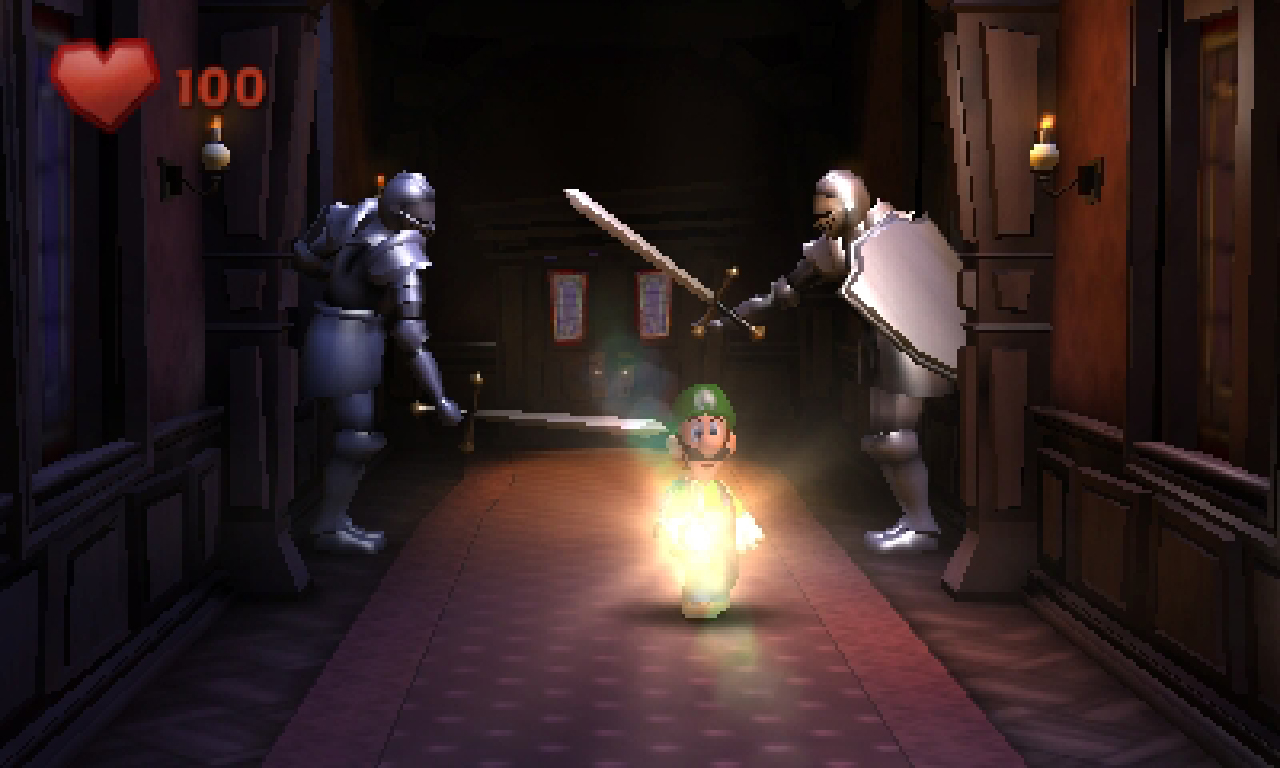
Many of these little secrets conceal money – a hidden shelf stacked with notes that flutter into his nozzle, say – and some are the beginning of causal chains of actions to solve. Blow the wheel to lower the lamp into the fissure to disturb the golden bats, which will drop gold bars if you flash them with your torch. Other puzzles allow you to progress along the critical path: weighting puzzles that require you to pick up and deposit objects to progress, puzzles that involve firing objects into position. There are simple elemental puzzles, lighting fires so you can ignite logs to melt ice, or you might find balloons you can inflate to make Luigi float. In the tradition of so many latter-day Nintendo games, few ideas are used more than a few times.
Every room is different, the puzzles retaining a light touch because the world so readily responds to Luigi’s actions, filled with cartoon-proportioned objects that wobble and tremble and billow dust as he vacuums. It’s a pleasure to experiment, testing every piece of furniture and every hanging object to see if it’ll do something, craning the view up and down to see if there’s anything hidden there. It might have been made by Vancouver-based Next Level Games, but this is a Nintendo game through and through, a reactive playground that’s bursting to reward you for poking around in its corners.
The puzzles also manage to avoid feeling arbitrary because they’re so themed to the rooms, from the dining room and garage of the first mansion to the drafting office and warehouse of a clock factory later on. The detailing of these spaces is the first pleasure, with many features specific to each space, but noticing them is important because of the Dark-Light Device, a torch which can re-materialise objects that Boos have hidden. It pays to make out the dusty shadow left by a missing dresser, or the apparently out-of-reach chest that proves you can get over a missing gantry.
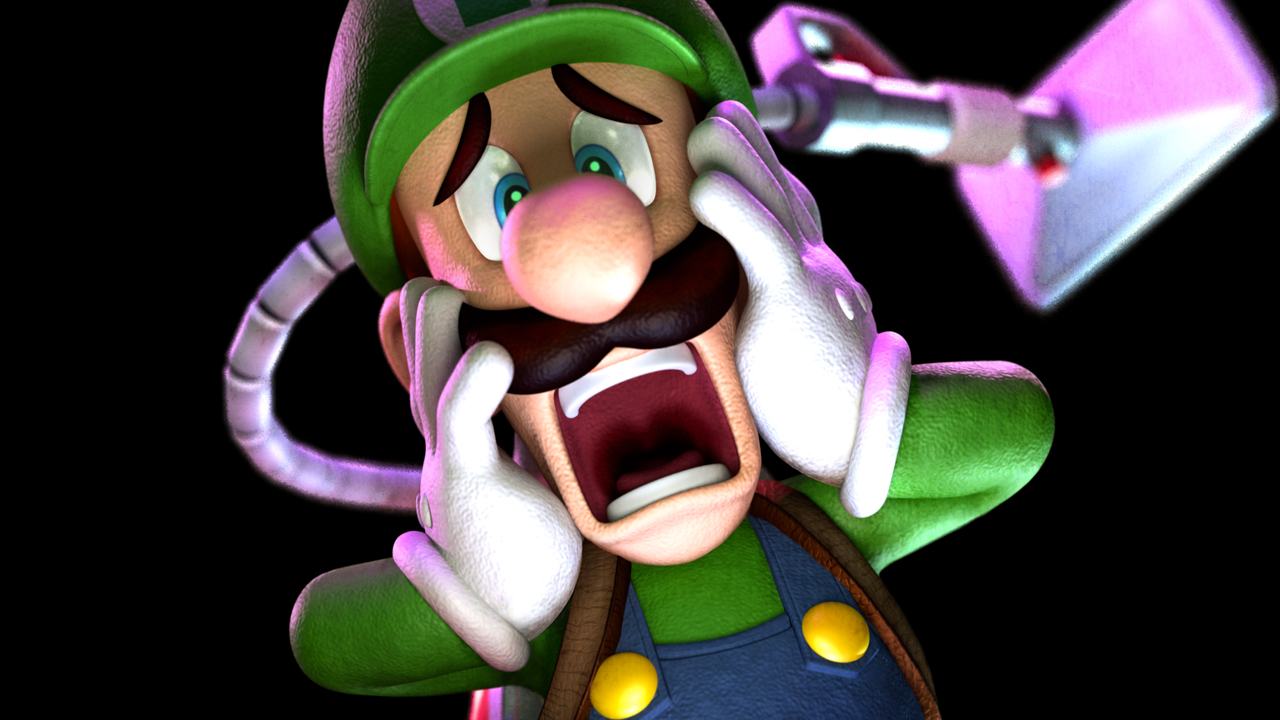
Dark Moon’s quality as a game about observation is considerably heightened by the nature of its host platform. With the 3DS now at the end of its life, it’s clear that its take on stereoscopic 3D was ultimately ephemeral, despite being built into its hardware. It’s a point that even Nintendo conceded when it launched the 2DS, which lacks the auto-stereoscopic screen. But that isn’t to dent what 3D can do in the right hands. OK, it didn’t create new forms of play, and it wasn’t about thrusting ‘wow’ moments into players’ eyes as things jumped out of the screen. The best stereoscopic games instead present worlds to look in on, with scenes with depth that you feel you can reach into and touch. Fire Emblem becomes a game of tabletop miniatures; the Hyrule of A Link Between Worlds becomes a land of solid objects, rather than flat planes.
In that way, Dark Moon’s mansions are little dollhouses, with each room a handheld scene to absorb and enjoy for its intricate construction. As Luigi steps into deeper rooms the camera snaps forward to them, helping the mansions’ overall structures make spatial sense as buildings, even if each room is really its own self-contained vignette. And just to really underline it, Dark Moon also features the ability to peek through windows and cracks into adjoining rooms to watch the ghosts perform little animated skits, and there’s even a series of 3D ‘photographs’ to look at and zoom into, finding clues relating to the story.
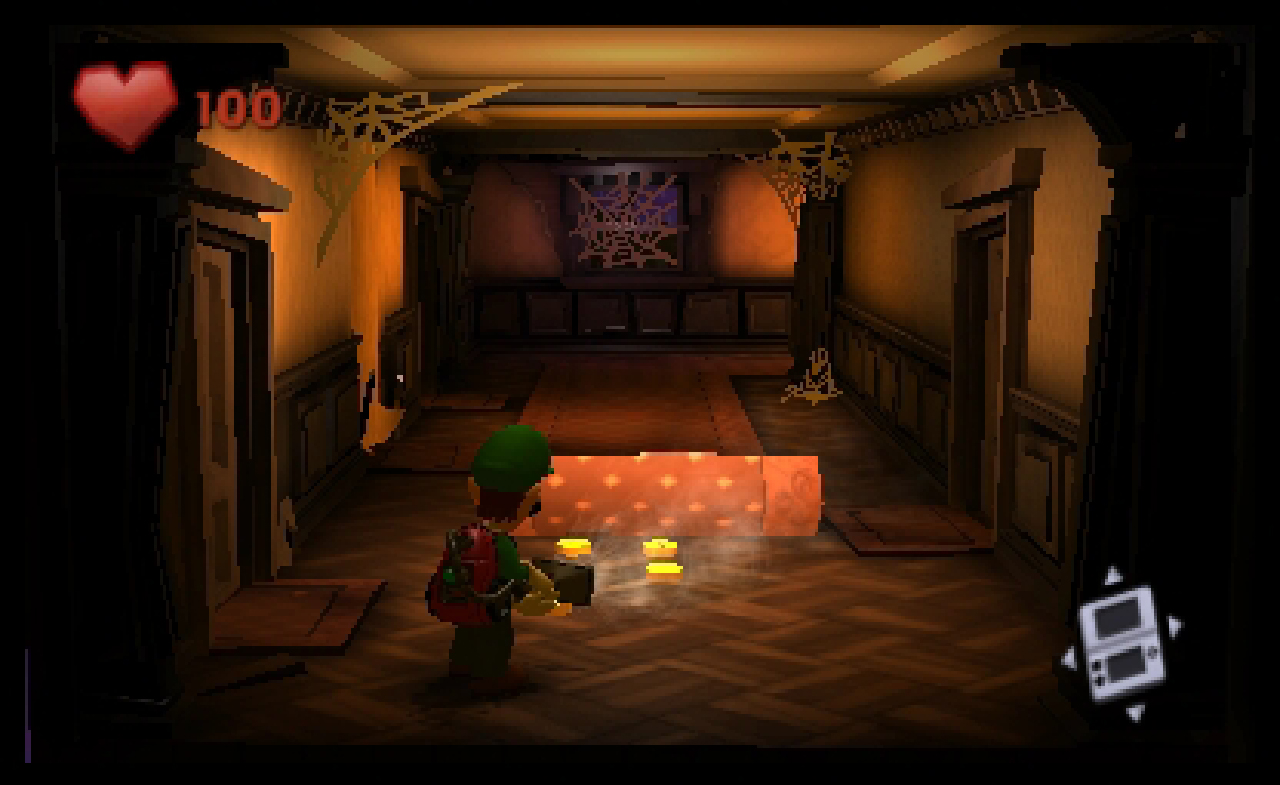
As with so much about Dark Moon, the original got to stereoscopic 3D first, making the dollhouse an indelible part of Luigi’s Mansion’s whole premise. But since 3D TVs were so rare in 2001, the feature wasn’t released with the game. There’s a general nagging sense in Dark Moon that its best features were, in fact, all there in the original. And the most important of them really are: the feel of tugging the ghosts into Luigi’s Poltergust; the way the lights come on in the room when you’ve defeated them all; the steady sense of mastery of the mansions as you clean them out.
But Dark Moon does so much to build on, complement and support these original features. It helps that in all the time between original and sequel, there had still been nothing else quite like it. Just as Luigi matured in that time, so Dark Moon was able to isolate just what made his first game so distinctive. It’s a delight to rediscover that the answer is so simple: the pleasure of peering into, and playing with, a world of little spaces.
This article originally appeared in Edge magazine. For more great coverage, you can subscribe here.
